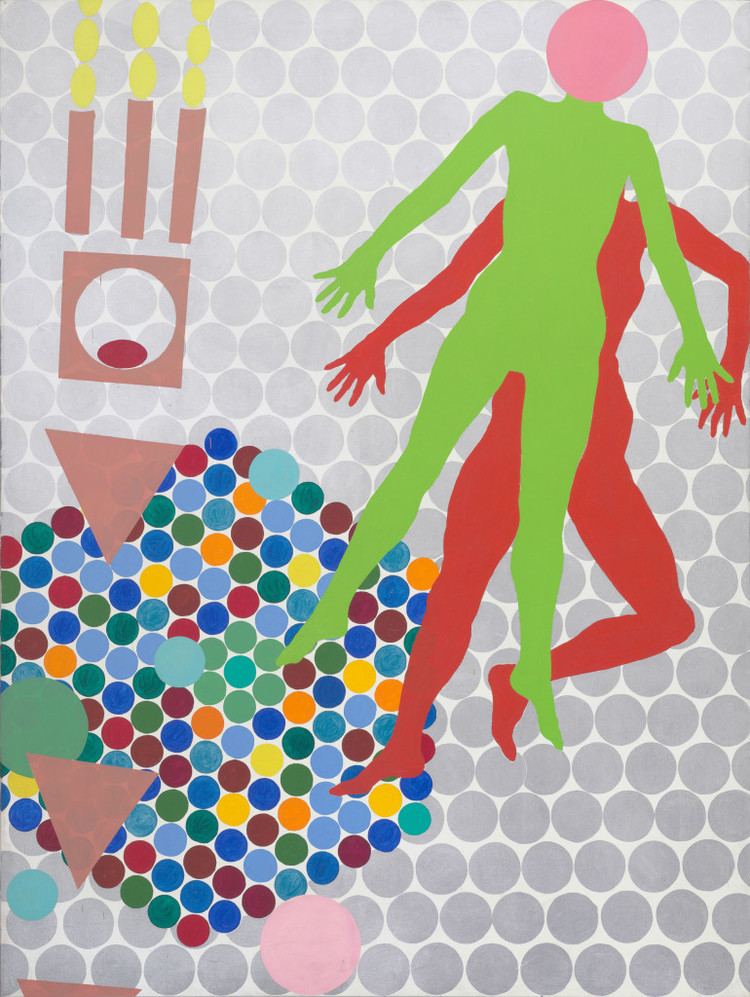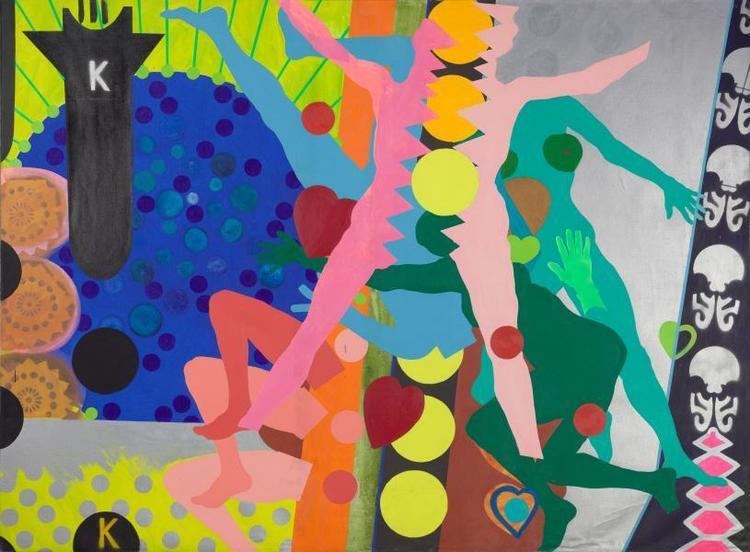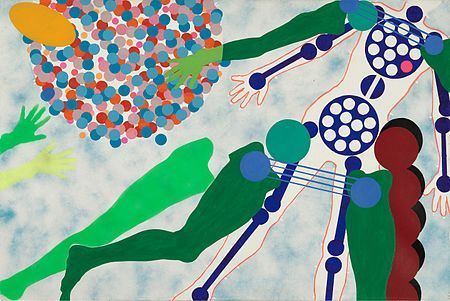Name Kiki Kogelnik | Role Artist | |
 | ||
Known for PaintingSculpturePrintmaking Education Academy of Fine Arts Vienna | ||
Kiki Kogelnik (1935–1997) was an Austrian painter, sculptor and printmaker. Born in southern Austria, she studied at the Vienna Academy of Fine Arts and moved to New York City in 1961. Kogelnik is considered Austria’s most important pop-related artist, despite having been known to take issue with being considered part of the pop art movement.
Contents
- Kiki kogelnik werner berg s dk rntentv
- Kiki Kogelnik Outer Space
- Life and work 1960s
- 1970s and later
- Death and legacy
- References

Kiki kogelnik werner berg s dk rntentv
Kiki Kogelnik | Outer Space
Life and work: 1960s

Kogelnik began her career at the Galerie Nächst St. Stephan in Vienna in 1961, showing abstract works. At the time she was influenced by Serge Poliakoff of the École de Paris, but later found her own unique genre while surrounded by the pop art movement in New York. At one point she was engaged to Austrian abstract expressionist artist Arnulf Rainer.

Kogelnik was close to another abstract expressionist, the American artist Sam Francis, and spent time with him in 1961 in New York and Santa Monica, California. Kogelnik then moved to New York in 1962 where she joined a close-knit group of artists that included Roy Lichtenstein, Claes Oldenburg, Andy Warhol, Larry Rivers, Tom Wesselmann, Joan Mitchell, Robert Rauschenberg and Jasper Johns, among others. Pop was a way of life, and with Kogelnik extravagant hats and outfits Kogelnik became a captivating happening wherever she went.

Her work during that time was strongly influenced by the pop art colors and materials of the time, producing numerous brightly colored euphoric space-themed paintings. Unlike pop artists, she avoided the celebration of commerce or quotidian objects, although she was known to foreground plastics and the artificial over nature.

During the early 1960s Kogelnik began to use life-size cutout paper stencils of her friends to produce her paintings. In 1965 these prototype cut-outs became vinyl hangings, presented on the same clothing racks that she saw pushed down the streets in the vicinity of her studio in New York’s garment district.

While Kogelnik was in London in 1966, her New York studio space was engulfed in an enormous fire. Although Kogelnik had just moved out prior to the fire, her downstairs neighbor, American artist Alfred Leslie, lost his entire artistic output. That same year, Kogelnik married radiation oncologist Dr. George Schwarz in London, giving birth to her son Mono in 1967, returning to New York shortly thereafter. In 1969, Kogelnik created a Moonhappening during the lunar landing of Apollo 11 at the Galerie Nächst St. Stephan in Vienna, producing a series of lunar-themed silkscreens during the live broadcast.
1970s and later
In the 1970s Kogelnik’s focus shifted to what later became known as her Women works, specifically addressing the female role portrayed in commercial advertising. Broaching feminist issues indirectly with irony, humor and a cool pop aesthetic was unique to Kogelnik’s work during this time. In 1974 she also began to work occasionally with ceramics, employing sculptural form as an extension of painting.
In the 1980s, fragmented people, signs and symbols begin to fill Kogelnik’s work and in her Expansions series she used ceramic modules shown in conjunction with her paintings. She also produced and directed a short 16mm B&W film CBGB in 1978, featuring Jim Carroll and others.
In later works, the human body is depicted in increasingly fragmented and manipulated form, until in the 1990s much of her work portrayed highly abstracted yet expressive faces. During this time Kogelnik created a series of glass sculptures, related drawings and prints, in which she sought to comment on decorative and commercial themes in art-making.
Death and legacy
Kiki Kogelnik died of cancer on February 1, 1997 in Vienna. She is buried in Bleiburg, Austria. The Belvedere Museum in Vienna held a large retrospective of her work in the same year. In 1998 Kogelnik was posthumously awarded Austria’s highest medal in the arts, the Austrian Cross of Honour for Science and Art. She was previously awarded, in 1995, the City of Vienna Prize for Visual Arts.
Since the artist’s death, the Kiki Kogelnik Foundation, a U.S. non-profit organization was established, with offices in Vienna and New York City. The foundation’s mission is to protect, document, research and perpetuate the creative legacy of Kiki Kogelnik. As of 2009 the foundation continues to maintain and enlarge a comprehensive database that was established by Laura Kendall in NYC of Kogelnik’s works for art-historical research, and will eventually create a Catalogue Raisonné.
In 2003, the Austrian Post office issued a 55 euro-cent stamp featuring Kogelnik’s 1973 painting, Prenez Le Temps d’Aimer . Kogelnik also designed two fountains, one in Bleiburg, Austria and another in Klagenfurt, Austria, where a street is named after her.
